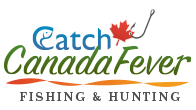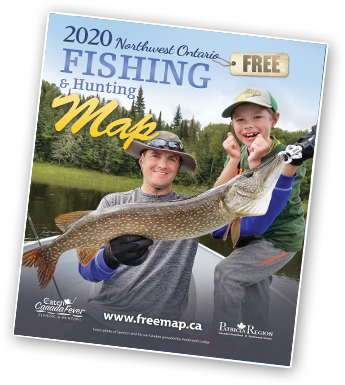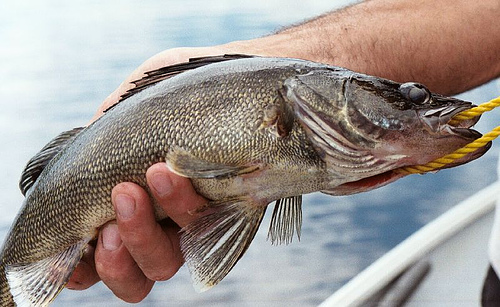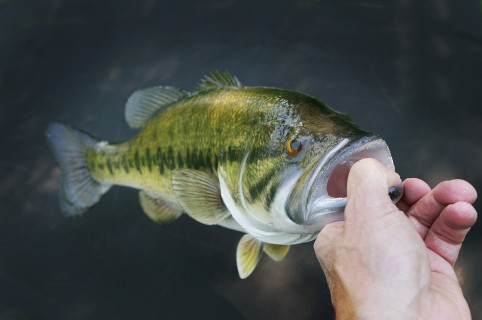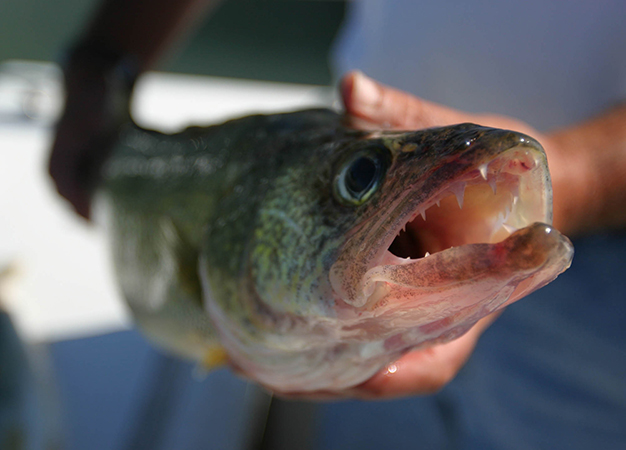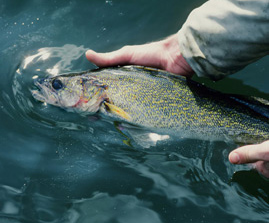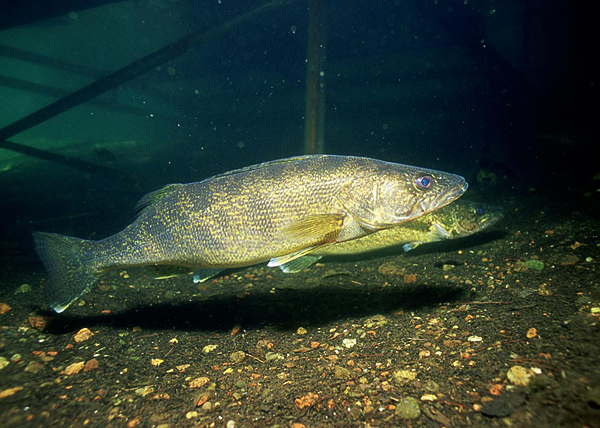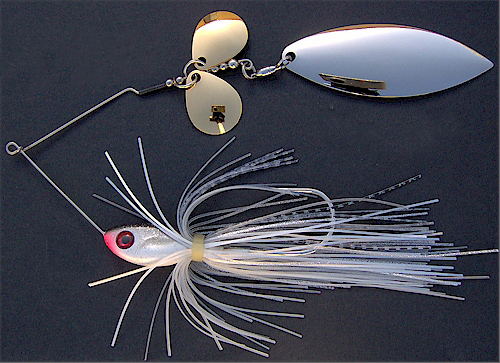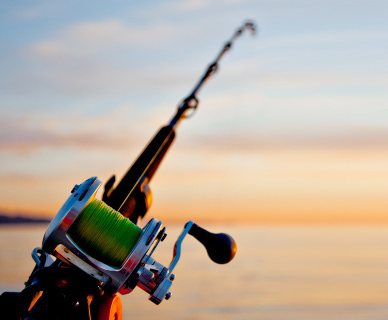Big pike are a great fish to take on a fly, but fly fishing for pike present a couple of problems. First, the flies must be big to attract a consistent amount of bites from these big fish. If they are tied with natural materials, they can suck up enough water to make casting more akin to flinging a wet canary as opposed to a fishing lure. Some pike flies have enough rabbit fur in them to line a pair of winter mittens. Too often, pike flies don’t last more than one hit, never mind whether or not the fish is even hooked. Pike teeth and fly-tying thread were not meant for each other; most flies are unwinding and shedding land a pike or retrieve after a missed strike. Traditional pike flies last as long as a roll of toilet paper in a tornado.

Enter “The Invincible”, the pike fly that can be tied as big as you want, with synthetics that shed water like a happy duck. It’s about as close to bulletproof any pike fly can get, and it can be fished with a nice 8 weight outfit. As a result The Invincible fly is not only for pike, but also muskie, pickerel, bluefish, blue walleye, barracuda, weakfish, king mackerel, lake trout, sea trout, sharks, bowfin, snapper, or just about any other fish you can name in fresh or salt water. The durability comes from synthetic materials and a new way of tying flies using epoxy. And no, we’re not talking about “tying”; a fly with a hell of epoxy that ask the same action as a railroad spike. The fly is lifelike, flashy and sassy, with a lot of movement in the tail and the body. And you can tie it in any size color, on any size hook, in any size length.
To tie The Invincible, you need synthetic tail materials, such as Super Hair, and Body fur for the body. Some five-minute epoxy and standard fly-tying thread complete the list of materials, although, you can add flash to the tail and eyes to the head if you want. Begin by tying on the thread at the rear end of a long hook, such as a 34011 Mustard. Sizes 1/0 and 3/0 seem to be the best for pike, but you can tie it in any size, adjusting the materials and length of tail. Spiral wrap the thread up and down the hook shank a few turns, ending up at the rear of the shank.
Once the thread is attached, and the excess is cut, tie down a long tail of Super hair. For pike 4 to 6 inches on a 2/0 works well. If you like, add some flash such as Krystal Flash, Flashabou, or similar materials. Next, tie in the body fur by the stranded main thread. At this point, mix a small puddle of 5-minute epoxy, enough to coat the hook shank and later the head of the fly. With the epoxy mixed, add a thorough coating to the tail wrap and BodyFur tie down, and then cot the thread-wrapped hook shank.
Now spiral wrap or palmer the BodyFur forward along the hook shank. Do this with fairly close spirals, so that you get a bulky body for life-like minnow appearance. The key is to make sure the binding thread of the Bodyfur is tied down so that the extending fibers face rearwards. The binding thread is easy to turn as you tie, if you are required to adjust this, but in most cases, the synthetic fur falls naturally into place, flared to the rear and with the strand of cord imbedded in the bed of epoxy. This epoxy base is what prevents a pike -or any other toothy fish- from cutting the thread of the fly. At the head, tie off with the thread, wrapping so that you separate the BodyFur fibers to make it easy to cut the excess BodyFur forward of the wrap. Clip the BodyFur, tie off with thread and then make a smooth tapered head, tying off with a whip finish. Assuming that the remaining epoxy is still workable, add a coating to the finished head, and place the fly on a fly rotator so that the epoxy will not sag. It is possible to create a number of flies, and then add the head epoxy and place the flies in the rotator.
For weedy waters, you may tie in a mono or wire weedguard, although multiple catches of big pike will take its toll on any weedguard. Fish this fly the same as any pike fly. It should cast easily with a 8-weight outfit. Ideal spots for pike are weedy covers, along the break lines of drop off areas, in channels with running water where pike like to ambush large baitfish, or over deep weeds where pike might come up for a minnow swim enticingly over the weeds.
Casting is easy, since the synthetics shed water. It’s also an easy fly to fish, working in medium strips and pauses that make the fly appear as a like a minnow in the wrong neighbor hood. Hits can be light or vicious. I’ve seen pike just suddenly appear on the line when I made a strip after a pause, and I’ve also seen them a shallow-fished fly hard enough to churn the water like a broken fire hose. An easy way to vary color is to tie with light materials (white, yellow, pink, light blue, light green,tan, etc.) and then use a permanent felt tipped marker to color the flies. Easy markings include a dark back using black, green or blue to simulate minnow patterns; vertical barred red or green markings on a yellow fly to simulate perch (excellent for pike); a dark lateral parallel to the hook shank; covering the body with spots to simulate trout. It is also possible to use 2 BodyFur colors and weave different color top and bottom patterns, although the felt tipped markers are a lot easier. Similarly it is possible to wrap two colors together to make a barred pattern, such as combining white and black, or yellow and red.
While some prefer fairly tight palmering, wide-spread palmering results in a slimmer pattern that more closely simulates spearing, sand eels, candle-fish, alewives, dace, suckers and other bait. This is also better when tying smaller flies. The body may be trimmed with scissors to make a slimmer shape or a tapered look at the rear of the fly. This allows tying small flies with Body Fur then trimming to size.
Eyes improve just about any fly, and can be added by using lightweight or lead dumbbell eyes, bead chain eyes, plastic chain eyes, or stick-on eyes such as 3-D eyes form Bestway or Gaines FlyEye. With pike however, these may be lost on the first hit. Since pike are often found in weedy water, I usually tie my Invincibles with a mono loop weed guard. To do this, use a mono that is about the diameter of the hook shank, typically 30-pound or 40-pound test with a 2/0 hook. Tie in the mono first at the bend in the hook, then proceed with these steps to build the fly:
- Tie down the working thread at hook bend, and then tie in 4 to 6 inches of Superhair or Ultra Hair tail material.
- Tie in Flashabou, Krystal Flash or something similar, placing a small bundle on either side of the hook shank.
- Wrap excess tail or flash material forward to provide a base for epoxy and body. Return thread to tail of the fly.
- Tie in the body fur, at the same time adding 5-minute epoxy to the tie-down and entire hook shank.
- Wrap body fur around the hook shank, laying binding thread in wet epoxy up to in back of the hook eye.
- Tie off body fur with several wraps of excess fur. Now wrap a big head with thread and then whip finish.
- Tie in or glue on a set of eyes.
- Mark body with a felt tipped pen.
Finally, tie the mono end at the head of the fly. To keep the mono from slipping through the wraps, determine the length desired (keep the loop 1/8 to 1/4 inch extended from the hook point), pull forward, heat to form a ball on the end of the mono, and pull back to continue tying down. The ball melted at the end of the mono will prevent the weed guard from pulling out. While the pike flies tied onto 2/0 hooks are usually 7 to 9 inches long, longer flies for bigger fish (fly size definitely relates to catch size on some bodies of water) can be tied using tandem hook rigs. For this, use 60-pound-test Berkley nylon coated wire, wrapping the wire to both hook shanks. Both points can be down, or the rear point up and the front point down.
Flies tied on both hooks are similar, with the length of the wire determined by the forward hook tail. This makes it possible to make flies that are 12 inches or longer that are still castable, though you might want to move up to a 9- or 10-weight outfit instead of the 8-weight. For fish that don’t have teeth, you can tie the same pattern in a less durable version, using the same materials and tying techniques, only without the epoxy and only a coating of head cement or nail polish on the fly head.

